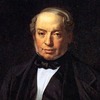Вход на сайт
На хрена попу Энштейн?
999 просмотров
Перейти к просмотру всей ветки
в ответ Derdiedas 07.02.06 11:42
http://www-astronomy.mps.ohio-state.edu/~pogge/Ast162/Unit5/gps.html:
"The engineers who designed the GPS system included these relativistic effects when they designed and deployed the system. For example, to counteract the General Relativistic effect once on orbit, they slowed down the ticking frequency of the atomic clocks before they were launched so that once they were in their proper orbit stations their clocks would appear to tick at the correct rate as compared to the reference atomic clocks at the GPS ground stations. Further, each GPS receiver has built into it a microcomputer that (among other things) performs the necessary relativistic calculations when determining the user's location"
http://homepage.univie.ac.at/Franz.Embacher/rel.html
Andererseits sind Zeitmessungen Effekten unterworfen, die von der Relativitätstheorie vorausgesagt werden. Sie nicht zu berücksichtigen, hieße, Fehler in der Genauigkeit des Systems in Kauf zu nehmen. Interessanterweise sind die Effekte der allgemeinen Relativitätstheorie in
diesem Fall größer als die der speziellen. Um die entsprechenden
Korrekturen geht es auf dieser Seite.
http://www.phys.lsu.edu/mog/mog9/node9.html:
"At the time of launch of the first NTS-2 satellite (June 1977), which contained the first Cesium clock to be placed in orbit, there were some who doubted that relativistic effects were real. A frequency synthesizer was built into the satellite clock system so that after launch, if in fact the rate of the clock in its final orbit was that predicted by GR, then the synthesizer could be turned on bringing the clock to the coordinate rate necessary for operation. The atomic clock was first operated for about 20 days to measure its clock rate before turning on the synthesizer. The frequency measured during that interval was parts in faster than clocks on the ground; if left uncorrected this would have resulted in timing errors of about 38,000 nanoseconds per day. The difference between predicted and measured values of the frequency shift was only parts in , well, within the accuracy capabilities of the orbiting clock. This then gave about a validation of the combined motional and gravitational shifts for a clock at earth radii. "
"The engineers who designed the GPS system included these relativistic effects when they designed and deployed the system. For example, to counteract the General Relativistic effect once on orbit, they slowed down the ticking frequency of the atomic clocks before they were launched so that once they were in their proper orbit stations their clocks would appear to tick at the correct rate as compared to the reference atomic clocks at the GPS ground stations. Further, each GPS receiver has built into it a microcomputer that (among other things) performs the necessary relativistic calculations when determining the user's location"
http://homepage.univie.ac.at/Franz.Embacher/rel.html
Andererseits sind Zeitmessungen Effekten unterworfen, die von der Relativitätstheorie vorausgesagt werden. Sie nicht zu berücksichtigen, hieße, Fehler in der Genauigkeit des Systems in Kauf zu nehmen. Interessanterweise sind die Effekte der allgemeinen Relativitätstheorie in
diesem Fall größer als die der speziellen. Um die entsprechenden
Korrekturen geht es auf dieser Seite.
http://www.phys.lsu.edu/mog/mog9/node9.html:
"At the time of launch of the first NTS-2 satellite (June 1977), which contained the first Cesium clock to be placed in orbit, there were some who doubted that relativistic effects were real. A frequency synthesizer was built into the satellite clock system so that after launch, if in fact the rate of the clock in its final orbit was that predicted by GR, then the synthesizer could be turned on bringing the clock to the coordinate rate necessary for operation. The atomic clock was first operated for about 20 days to measure its clock rate before turning on the synthesizer. The frequency measured during that interval was parts in faster than clocks on the ground; if left uncorrected this would have resulted in timing errors of about 38,000 nanoseconds per day. The difference between predicted and measured values of the frequency shift was only parts in , well, within the accuracy capabilities of the orbiting clock. This then gave about a validation of the combined motional and gravitational shifts for a clock at earth radii. "

